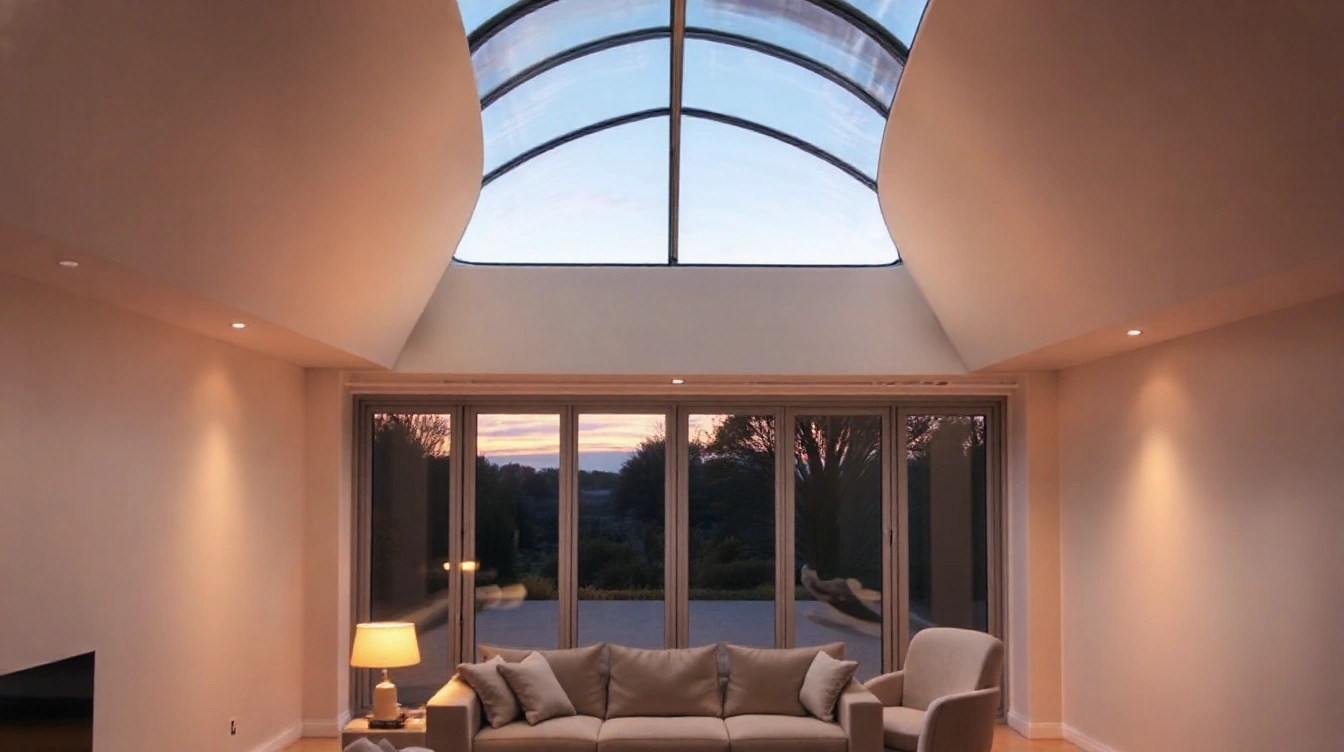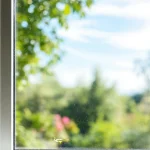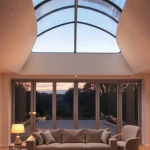Roof lanterns transform interiors by inviting abundant natural light, creating bright, welcoming spaces that redefine home ambiance. Thoughtful design and material choices can amplify daylight, enhance architectural appeal, and boost property value. Exploring innovative styles and expert installation tips helps you make informed decisions that blend functionality with striking aesthetics—turning your living space into a light-filled haven.
Maximising Natural Light with Roof Lanterns
Natural light plays a crucial role in home design, and roof lanterns are a highly effective way to enhance interior lighting. These architectural features are specifically designed to increase daylight penetration, transforming dark or cramped spaces into bright, inviting areas. By positioning roof lanterns strategically, homeowners can benefit from a significant boost in natural light, reducing reliance on artificial lighting and improving the overall ambience.
Also read : Top-rated mayfair carpet cleaners for a pristine living space
When considering roof lanterns for natural light enhancement, several key design elements must be addressed. The size and placement of the lantern determine how much daylight enters; larger units or multiple smaller lanterns can maximize light distribution throughout the room. The glazing type and frame materials also influence light quality and energy efficiency, with options available to minimize heat loss while still allowing abundant light. Additionally, the shape and angle of the roof lantern can be tailored to suit specific housing styles and functional needs.
Real-life transformations demonstrate the powerful effect of roof lanterns. For example, spaces once perceived as dark and closed off have been revitalized through the installation of lanterns, revealing the true potential of the interiors. Homeowners report a noticeable uplift in mood and space usability thanks to the infusion of natural daylight. This practical upgrade not only improves visual comfort but also adds an elegant architectural feature, complementing various home design aesthetics.
Also read : Transform your space with opening roof lanterns
Incorporating Ventilated Opening Roof Lanterns can further enhance natural light control while promoting air circulation, making them an excellent modern choice for those looking to maximize daylight in stylish, functional ways.
Innovative Design Options for Roof Lanterns
Exploring innovative roof lanterns introduces homeowners to a blend of contemporary and classic styles tailored to enhance architectural features. Modern styles offer versatility, allowing these roof lanterns to seamlessly integrate with diverse home designs, from sleek minimalism to traditional charm.
Material choice significantly impacts both the look and function of roof lanterns. Glass is a popular choice for its clarity and ability to maximize natural light, offering a bright, open feel. Aluminium frames contribute durability and a sleek finish that complements modern aesthetics, while timber adds warmth and character, ideal for homes seeking a more natural or rustic appearance.
Customization plays a central role in these innovative designs. Homeowners can select from different glazing options, frame colours, and opening mechanisms, such as Ventilated Opening Roof Lanterns, which provide enhanced airflow and environmental control. These customisable features not only elevate the performance of roof lanterns by improving insulation and ventilation but also allow the homeowner to tailor the appearance to their exact preferences, creating a bespoke architectural statement.
The interplay between material technology and architectural ambition means that innovative roof lanterns are not just window features—they are centrepieces that marry functionality with style, enhancing the overall experience of interior spaces through light, air, and design excellence.
Enhancing Home Aesthetics and Value
Adding roof lanterns to your home offers a remarkable boost in both design enhancement and home value. These architectural features introduce natural light, enriching interiors with brightness and a sense of spaciousness that traditional skylights or windows cannot match. This infusion of light not only improves the visual appeal but also uplifts the mood and atmosphere within living spaces.
But how exactly does this architectural impact translate to an increase in resale value? The answer lies in the renewed desirability of homes that feel open, modern, and thoughtfully designed. Properties equipped with roof lanterns often stand out on the market because they offer an elegant feature that appeals to discerning buyers who value style and functionality.
Integrating roof lanterns seamlessly into a home’s existing architecture requires careful consideration. Selecting a style that complements the roofline and overall design ensures the lantern looks like a natural extension rather than an afterthought. Materials, shapes, and finishes should harmonize with the building’s character, enhancing rather than interrupting the architectural flow. This process elevates both curb appeal and the internal living experience.
Several standout projects showcase how incorporating roof lanterns transforms spaces. From converting dark conservatories into sun-drenched rooms to replacing aging roof structures with sleek, modern designs that invite daylight, these installations demonstrate creativity and precision. Their success lies in marrying practical benefits—like ventilation and insulation—with exquisite design elements.
For homeowners seeking to elevate their property’s distinction and market value, exploring options like Ventilated Opening Roof Lanterns offers versatile solutions combining ventilation, natural lighting, and aesthetic appeal—all contributing directly to a home’s architectural impact and overall value enhancement.
Installation Guidance and Practical Considerations
Ensuring a seamless and efficient setup process
When planning a roof lantern installation, following precise installation tips is crucial for achieving optimal results. Begin by thoroughly measuring the opening where the roof lantern will be fitted. An accurate frame and support structure must be constructed to bear the weight and resist weather elements. Proper sealing around the lantern is essential to prevent water ingress, which can cause long-term damage.
Common challenges during roof lantern installation include incorrect measurements, poor weatherproofing, and structural weaknesses. Professional advice is invaluable here. Experienced installers anticipate these issues and use methods such as reinforced frames and high-quality seals to avoid leaks and drafts. For instance, choosing materials designed specifically for roof lanterns enhances durability and thermal efficiency.
When sourcing professionals, it’s advisable to select certified installers who specialize in roof lantern installation. Brands known for their reliability and product quality typically provide installation support and warranties. Choosing a reputable expert not only ensures correct assembly but also compliance with local building regulations, which might otherwise complicate the process.
Ventilated Opening Roof Lanterns offer an advanced solution by combining natural light with airflow control, improving indoor comfort. Incorporating these into your project requires additional installation considerations, such as integrating ventilation mechanisms effectively without compromising the roof’s integrity.
By following detailed installation guidance and consulting professional advice, you can avoid common pitfalls and enjoy the full benefits of your roof lantern.
Comparing Top Product Options and Brand Recommendations
Insightful analysis to guide your choice
When evaluating roof lantern brands, it’s essential to weigh factors such as build quality, design innovation, and price to determine the best roof lanterns for your needs. Leading manufacturers typically balance these aspects differently, making a closer product comparison invaluable.
Top brands stand out by offering durable materials like hardwood or aluminum frames paired with double or triple-glazed glass for energy efficiency and long-lasting performance. For example, those prioritizing insulation might lean towards models with advanced glazing options, while others may value aesthetic flexibility or ease of installation.
Cost variations among roof lantern brands often reflect these quality distinctions. While premium models can command higher prices, they also tend to provide superior durability and lower maintenance. Conversely, budget-friendly options may sacrifice some features but still deliver adequate performance for less demanding applications.
Key features to consider when selecting a roof lantern include:
- Material and finish quality, affecting lifespan and upkeep
- Thermal performance to boost energy efficiency
- Opening mechanisms, such as manually or automated ventilated options
- Design compatibility with your existing architecture
By carefully comparing these aspects across reputable manufacturers, you empower yourself to choose roof lantern brands that align precisely with your functional and aesthetic goals. For a deeper understanding of ventilated systems, exploring Ventilated Opening Roof Lanterns can offer additional insights into how these features improve airflow and comfort.











